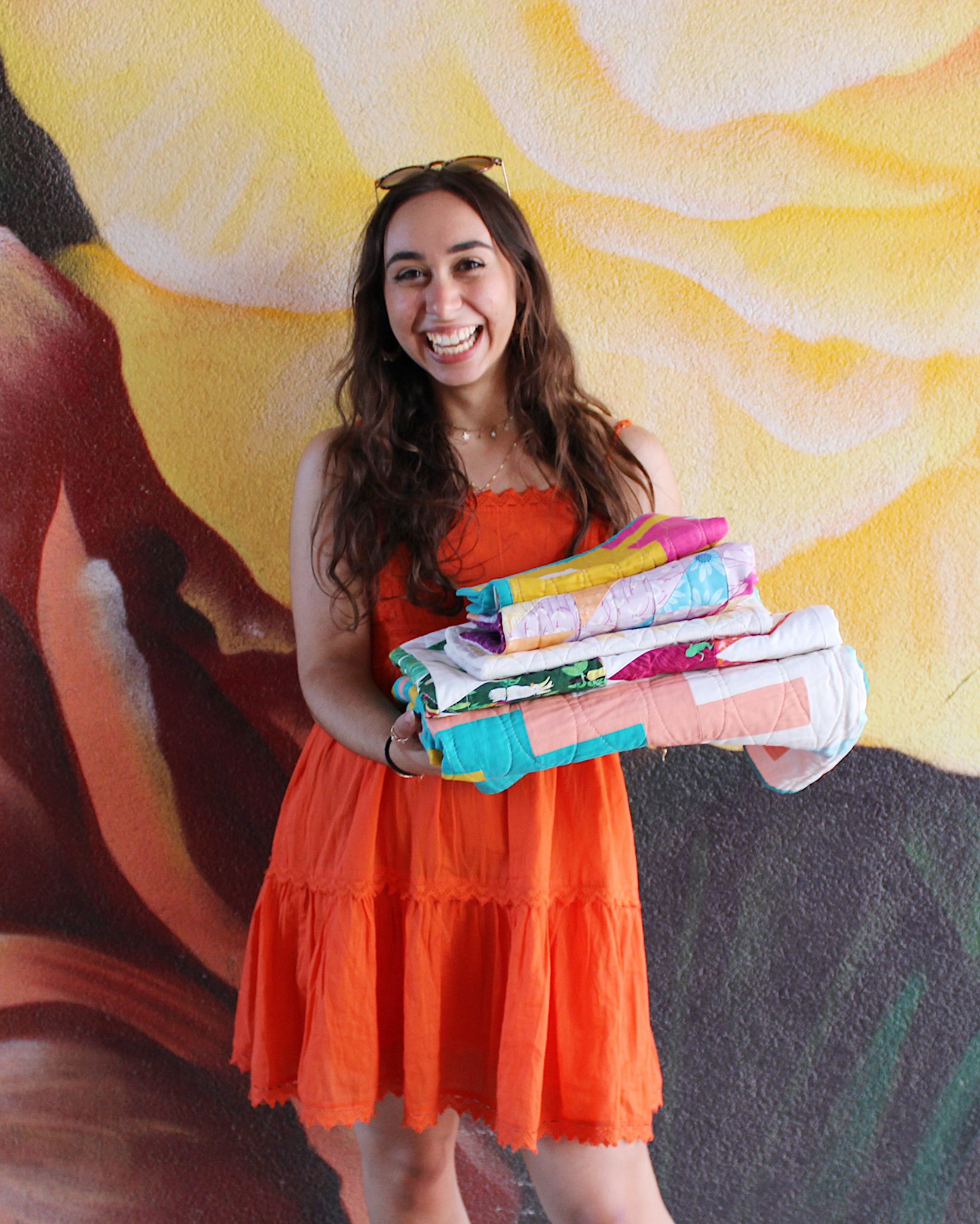Patchwork and quilting are a match made in heaven!
Here at Love Patchwork & Quilting magazine, we have a passion for patchwork. We love showcasing ideas and projects which utilise patchwork piecing and leave you with a beautiful quilt as the finished product.
Intrigued? Read on to find some more info on how to do patchwork for quilting, and a round-up of a few patchwork projects to help you get started on this magical quilting journey.
Your guide to patchwork and quilting
Patchwork and quilting are actually two different things, though the two crafts are closely intertwined and often go together, especially in the quil ting world. They also often get mixed up as the same thing – so we’re here to set the record straight!
What is patchwork?
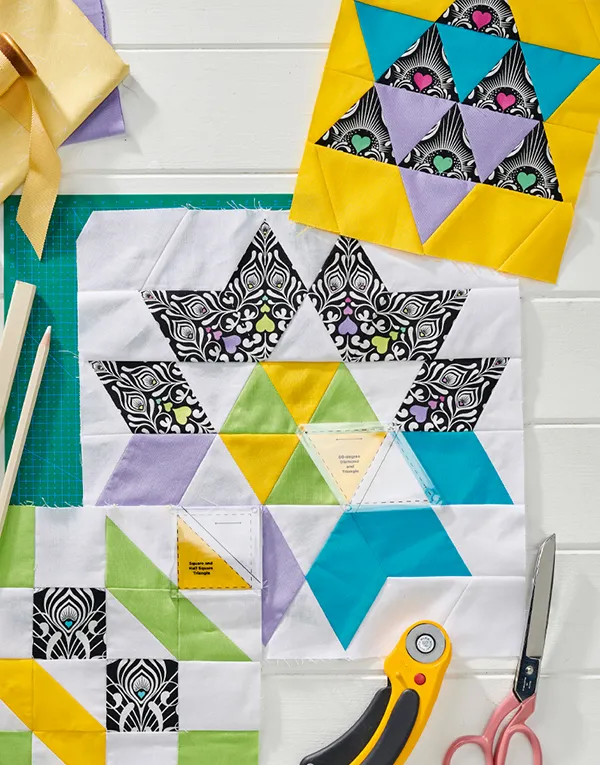
One of the most common methods for piecing a quilt is patchwork. It involves stitching together pieces of fabric (such as squares, strips or hexagons) to create a flat ‘top’, or ‘quilt top’. This top will then form one of the three components needed to create a quilt.
For more detailed patchwork projects, the quilt top will be comprised of multiple quilt blocks. These quilt blocks are made up of many different pieces of fabric, sewn together to create a specific design – such as a Log Cabin block, which has strips of fabric that increase in size to form a square. These quilt blocks are then stitched together to form a fabric top, the first layer of any quilting project.
Patchwork isn’t just used to make quilts. It can also be used to create items of clothing, such as skirts or jackets, or smaller household items like a cushion cover!
What is quilting?
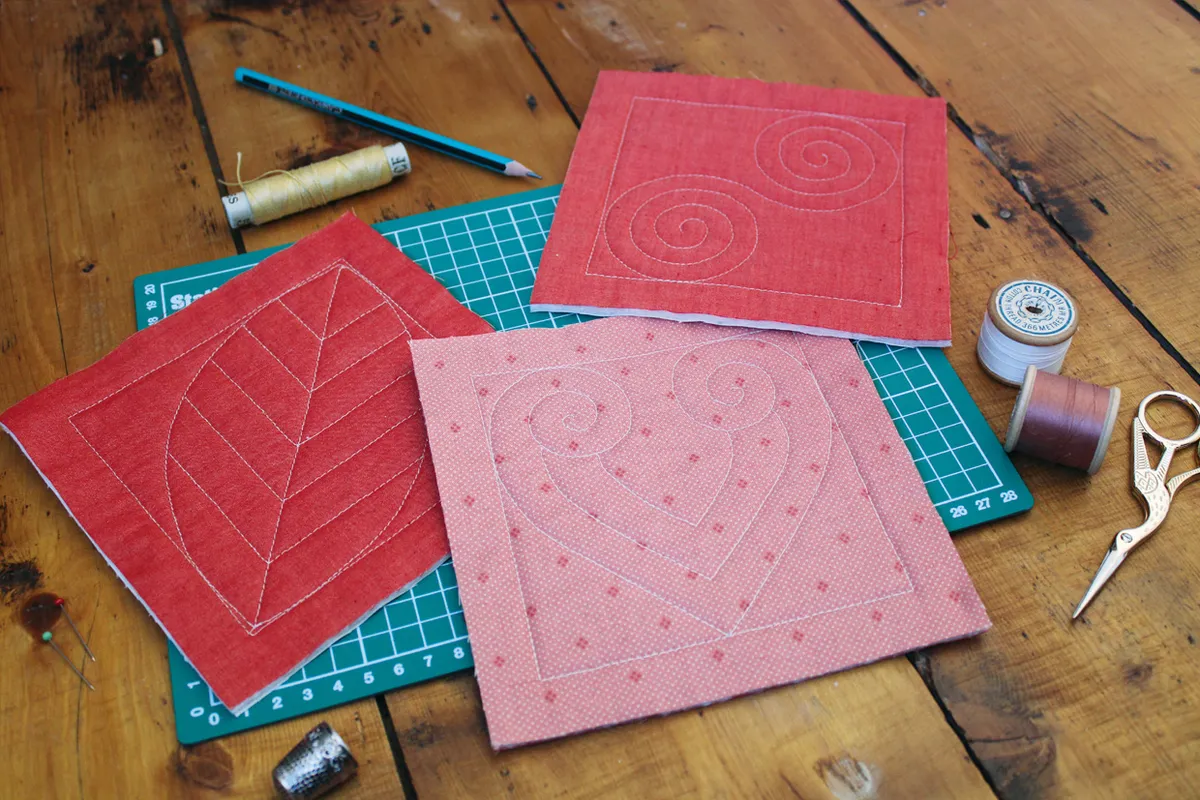
Quilting is the process of securing three layers of fabric together, by hand or by machine, usually to create a blanket of some kind (though not always!).
The layers – know as a ‘quilt sandwich’ – are comprised of:
- A fabric top (or ‘quilt top’)
- A layer of soft, squishy batting (or ‘wadding’) in the middle
- A fabric backing layer
When people talk about ‘quilting’, they’re usually referring to the process of sewing these three layers together.
Sometimes though, ‘quilting’ can simply be used as an umbrella term for any part of the process of making a quilt, including patchwork!
Some people opt to quilt simple, functional stitched straight lines, while others like to add extra detail to their quilt with free-motion quilted designs such as wavy lines or even flowers.
There are also longarm quilting machines which can quilt beautifully intricate, detailed patterns.
For more information on quilting, check out our complete guide to quilting for beginners. There, you’ll find step-by-step instructions on how to hand and machine quilt, how to bind your quilt and how to quilt as you go.
What do you need to make a patchwork quilt?
Here are the essentials you’ll need to make your first patchwork quilt:
Sewing machine
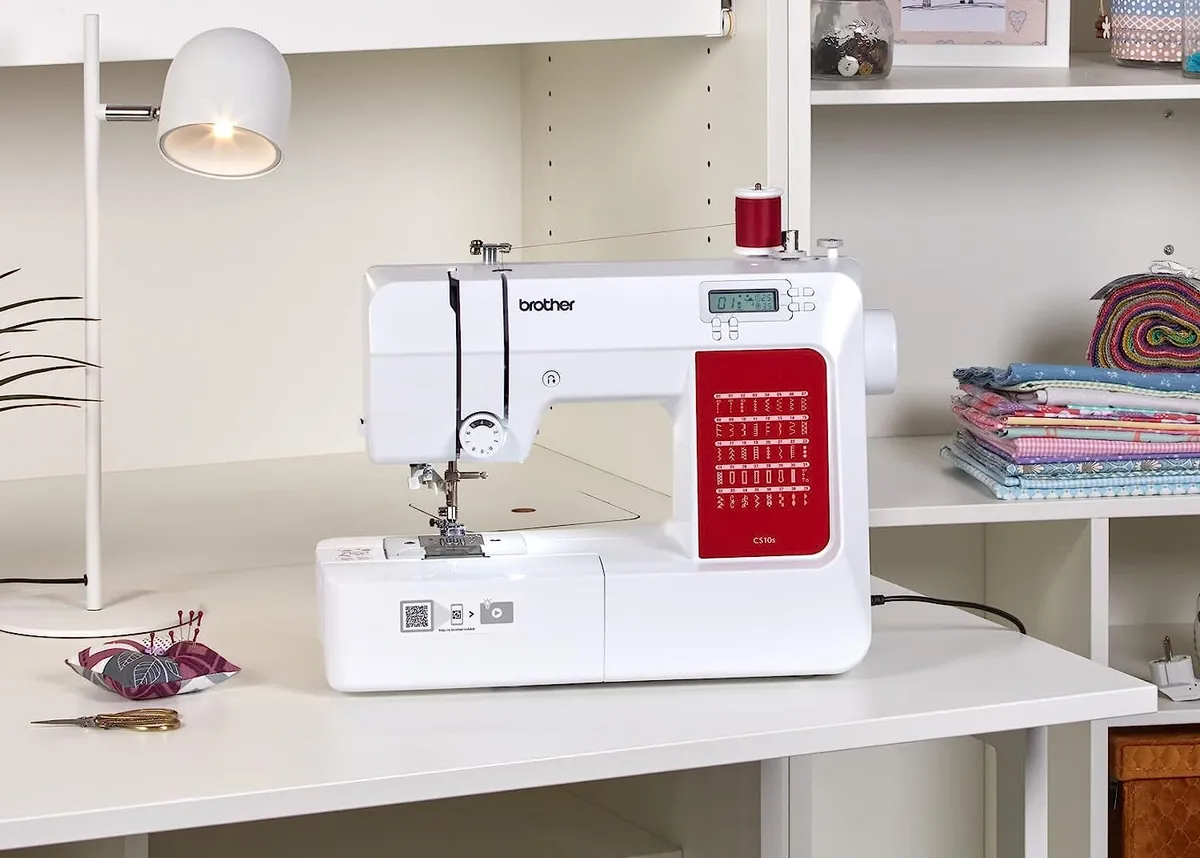
Though you can do patchwork by hand (or if you don’t own a sewing machine), a machine will certainly speed up the process.
If you’re in the market for a new sewing machine for patchwork, check out our recommendations for the best sewing machines for quilting.
Fabric

The best fabric to use for a patchwork quilt is quilting cottons. This is because they’re easier to use, and less likely to warp when sewn together in blocks or patchwork.
You can buy fabrics in packs, such as charm packs or fat quarters. Packs are a great choice because the prints will all be from the same collection, meaning you can showcase a range of different fabrics in your quilt, but they’ll all be cohesive and matching!
We have a round up of the best fat quarter bundles and the best charm packs for quilting here on Gathered.
Quilting ruler

Many quilt designs require precise measurements to ensure the finished piece looks neat and tidy. A quilting ruler will be your best friend when you’re working out the cutting measurements of your fabrics, as well as squaring up the edges of your quilt at the end. We found the best quilting rulers to help you find the most useful one for you and your project.
Rotary cutter
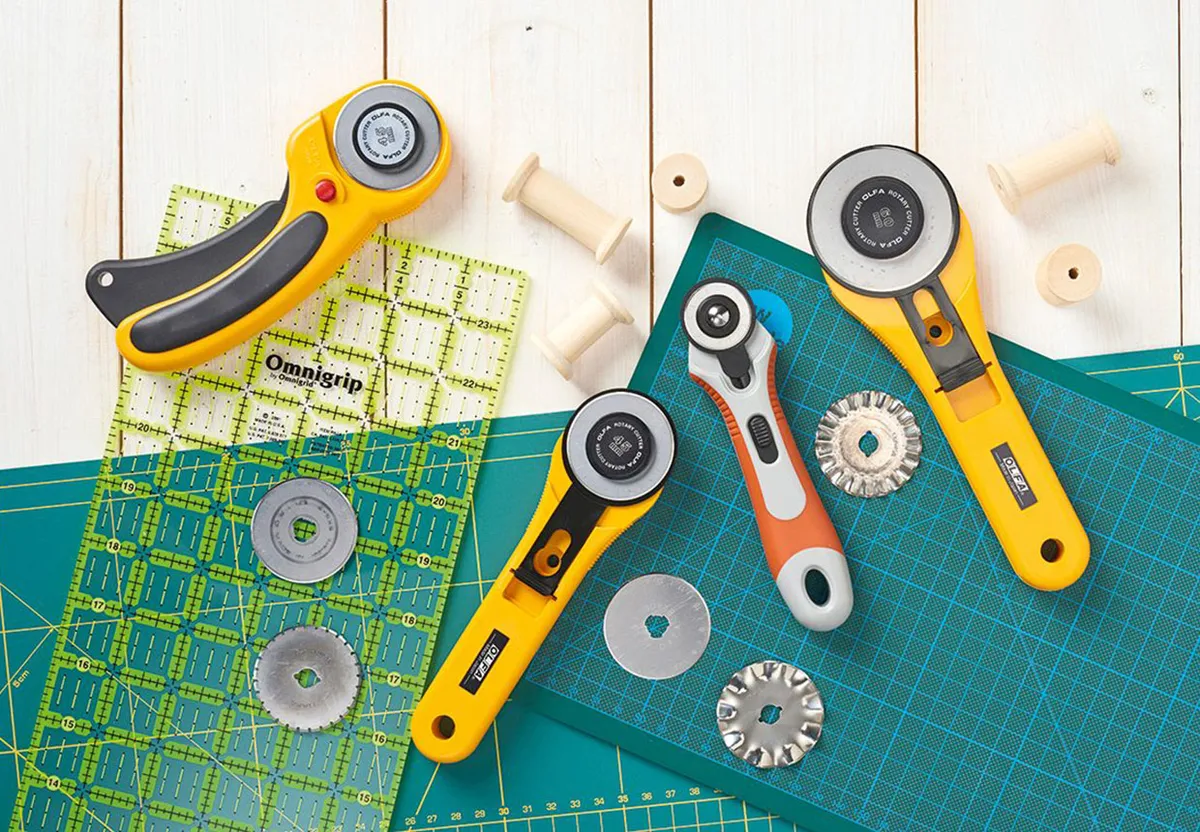
Put down those scissors: rotary cutters are actually much better for cutting out fabric for patchwork. They allow you to cut super safely and precisely!
For expert advice, check out our list of the best rotary cutters for quilting.
Cutting Mat
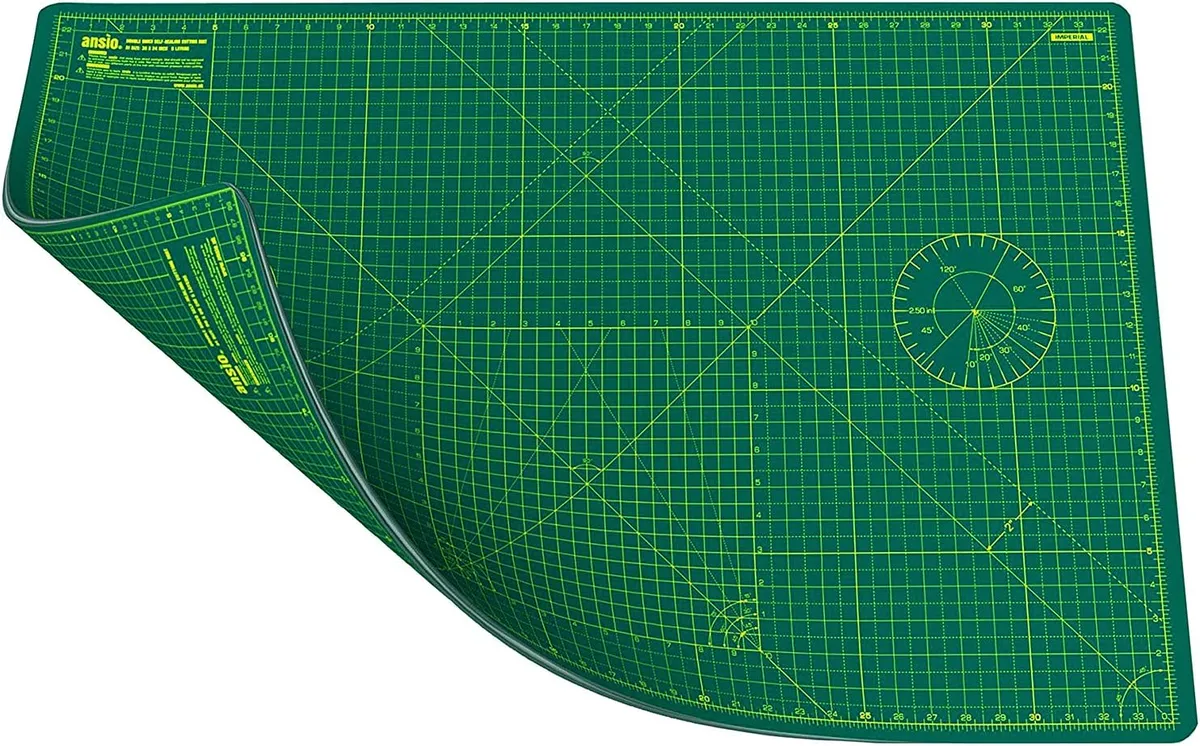
A cutting mat is another essential tool for cutting out your fabric pieces, ready for patchwork. It allows you to happily cut away, without damaging the surface below! Phew.
If you’re not sure where to start with purchasing a cutting mat, consult our guide on how to choose the right cutting mat for you.
Iron and ironing board
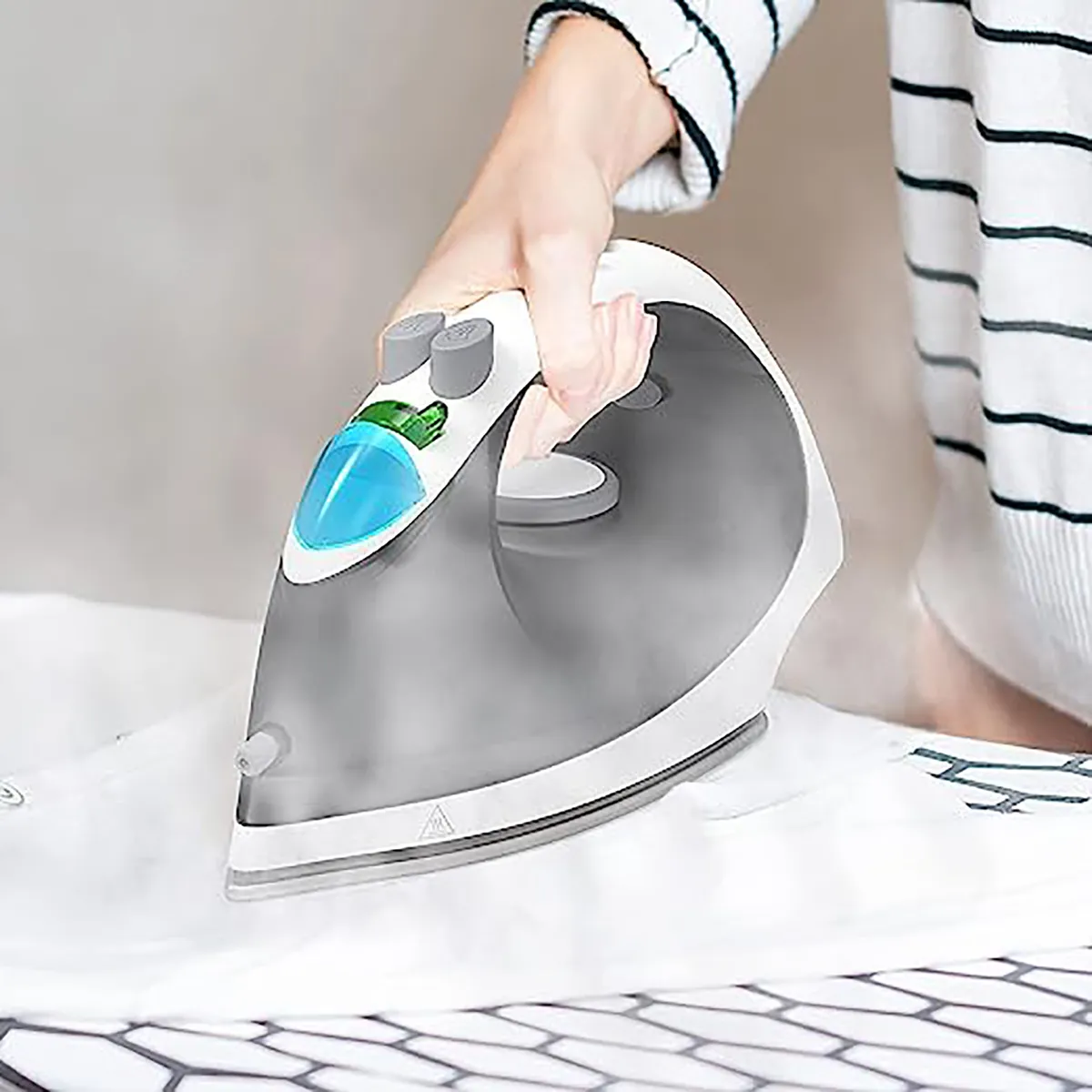
Pressing fabrics before cutting is an absolute must, as it keeps them crisp and straight, maxing out your piecing accuracy.
Plus, you’ll want to press your seams open or to one side, depending on the pattern instructions. This will help ensure your finished quilt looks prim and proper!
If you're looking for a new iron, then have a read of our best irons for quilting round-up here on Gathered. But wait: we even have a round-up of the best ironing boards for quilting too!
Thread
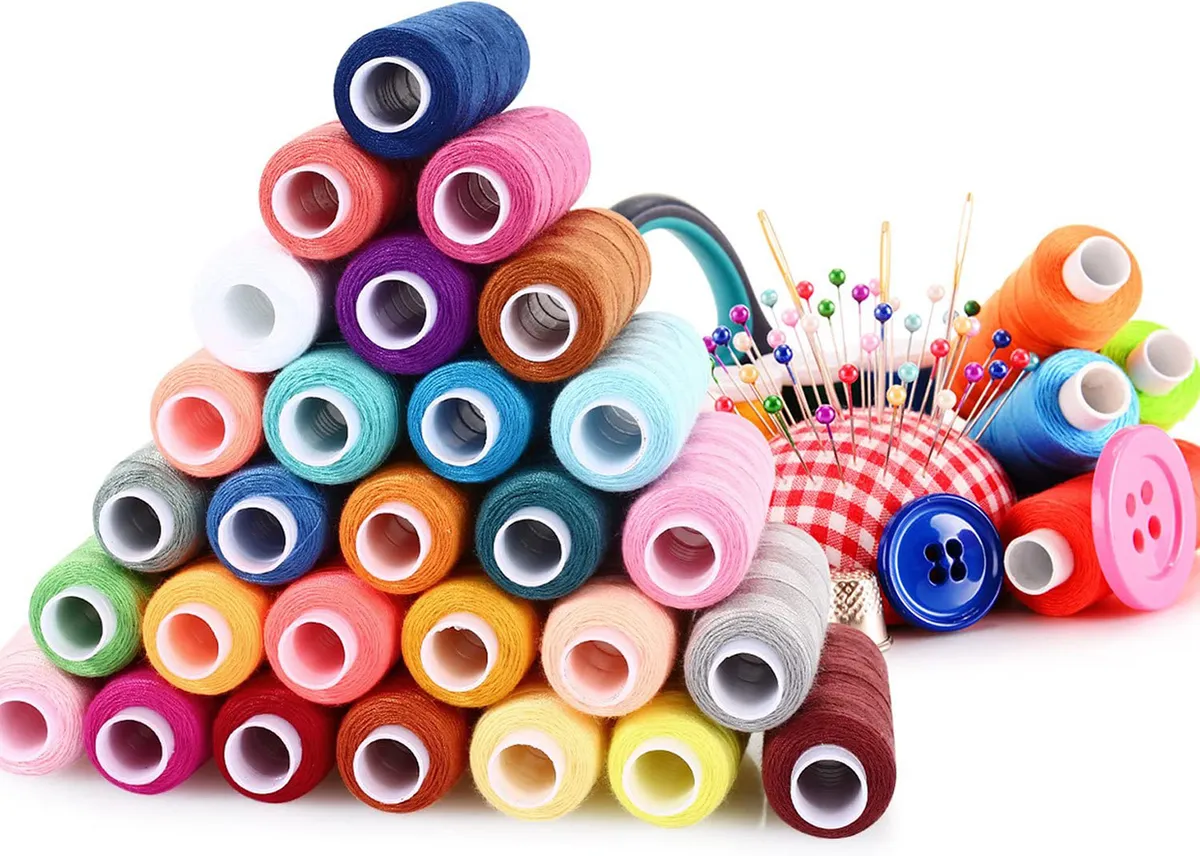
Did you know threads have varying thickness, and can greatly influence your stitching accuracy? We recommend 40wt or 50wt thread for patchwork piecing, though if you want your quilting to really stand out you can go for a 30wt thread.
For more detailed advice on how to pick the right thread for your project, and tips on the best threads to purchase, check out our guide to the best quilting threads.
How to do patchwork
Okay, so now you’ve got all the kit you need to make your first patchwork quilt. Ready to get piecing? You can sew your fabric or patchwork quilt blocks together by hand, or using a sewing machine.
How to do patchwork with a sewing machine

Step 1 Try to use a new needle when starting a new project, wherever possible. We recommend a size 80 needle.
Don’t forget to set your stitch length to 2.5 or 3. (Note that for specific methods, stitch length will be different: for example, for Foundation Paper Piecing, you should set your stitch length to 1.5.)
Step 2 Sew the two pieces with their right sides together (RST). Many sewing machines will have a 1/4in presser foot, to help you stitch with a 1/4in seam allowance.
Step 3 If you’re opting to sew your patchwork together with a sewing machine, many people prefer to press seams open for a flatter finish.
If you are matching lots of seams between pieces, you can press seams to one side, so they will nest with neighbouring seams.
How to do patchwork by hand
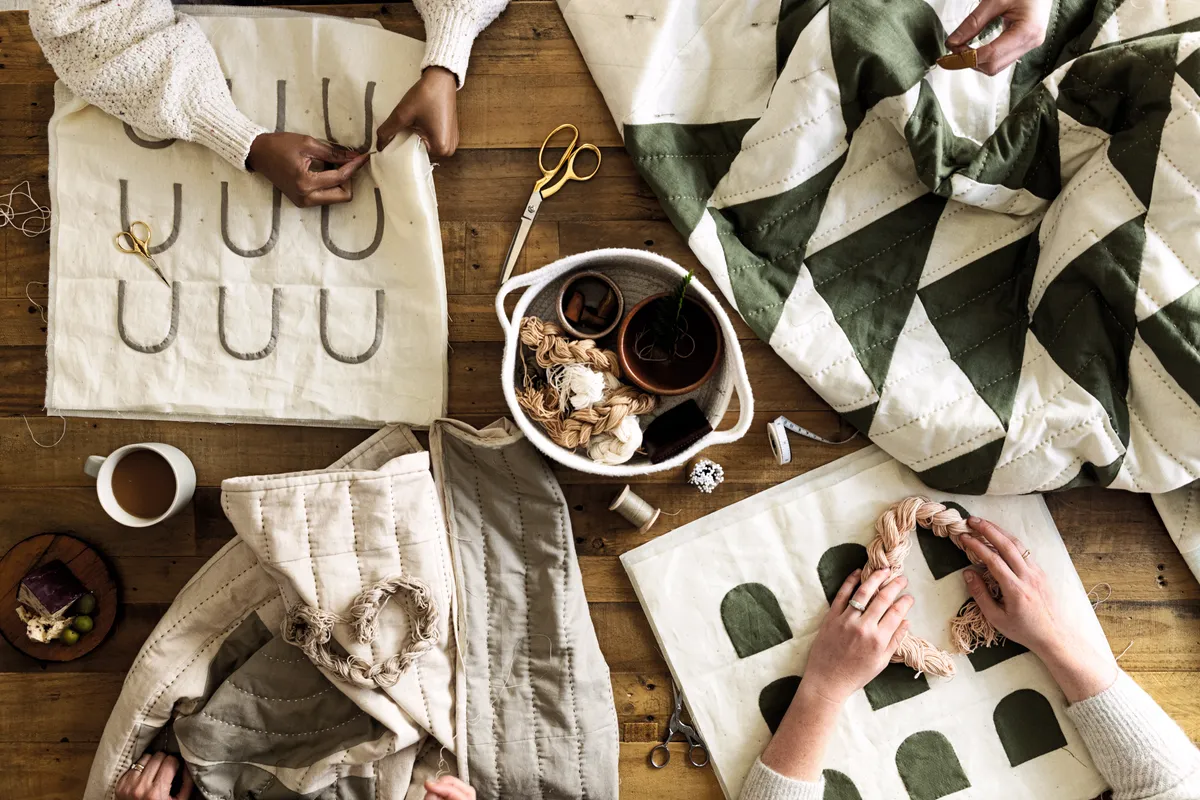
Few things are as beautifully soothing as piecing patchwork by hand. It’s a great way to keep the hands and mind busy, and you can do it from the comfort of your sofa!
Quilting pins and binding clips are a great way to keep your patchwork pieces together while you sew.
For detailed advice, head to our tutorial on how to hand piece patchwork here on Gathered.
How to speed up your patchwork with strip piecing
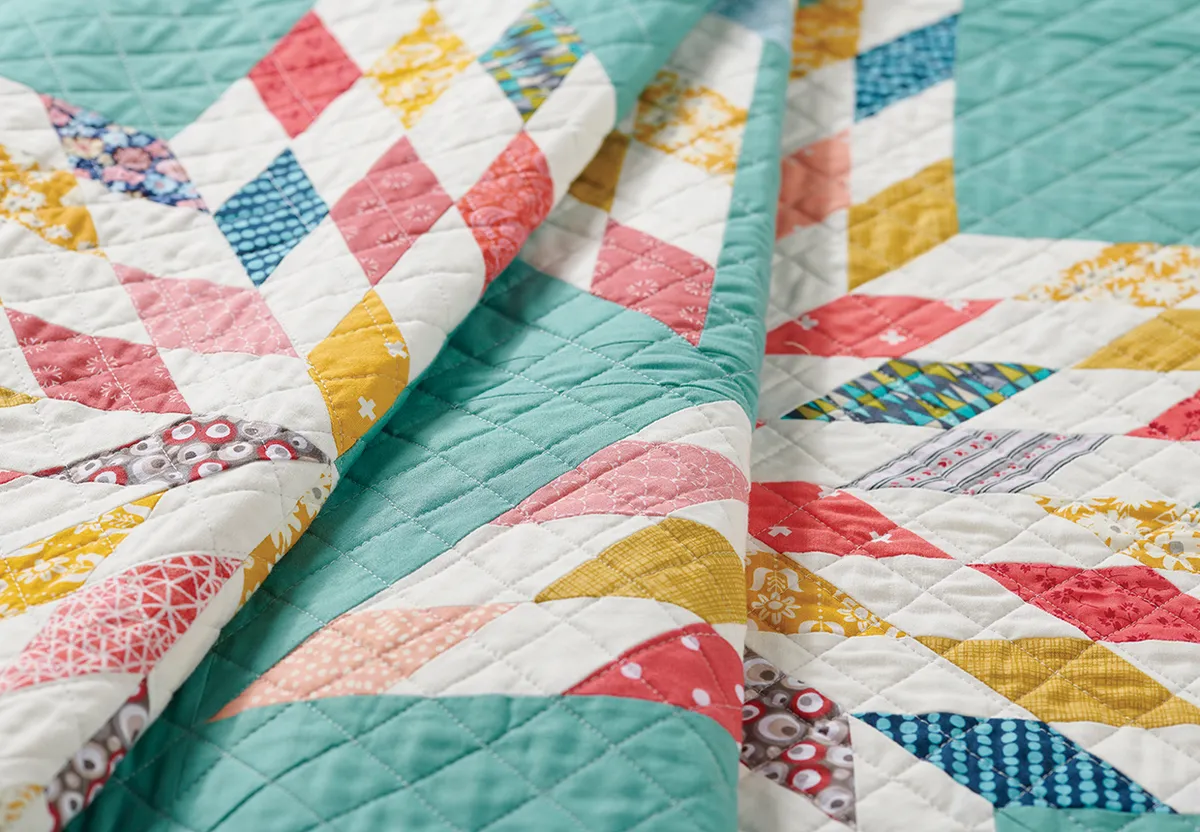
Strip piecing is the name given to a technique where strips of fabric are sewn together in parallel rows.
Once sewn together, you can then cut up the strip-pieced unit or ‘set’ into segments, which can then be used to create patchwork blocks.
If you’re after an expert tutorial on how to do strip piecing to speed up your patchwork, we have just the thing for you!
Patchwork and quilting projects for you to make!
Now we’ve gone over the basics, you can finally put your skills into practice!
We have plenty of free patchwork and quilting patterns right here on Gathered which will allow you to dip your toes into the wonderful world of patchwork, no matter how new to the craft you may be.
1. Patchwork stool cover pattern
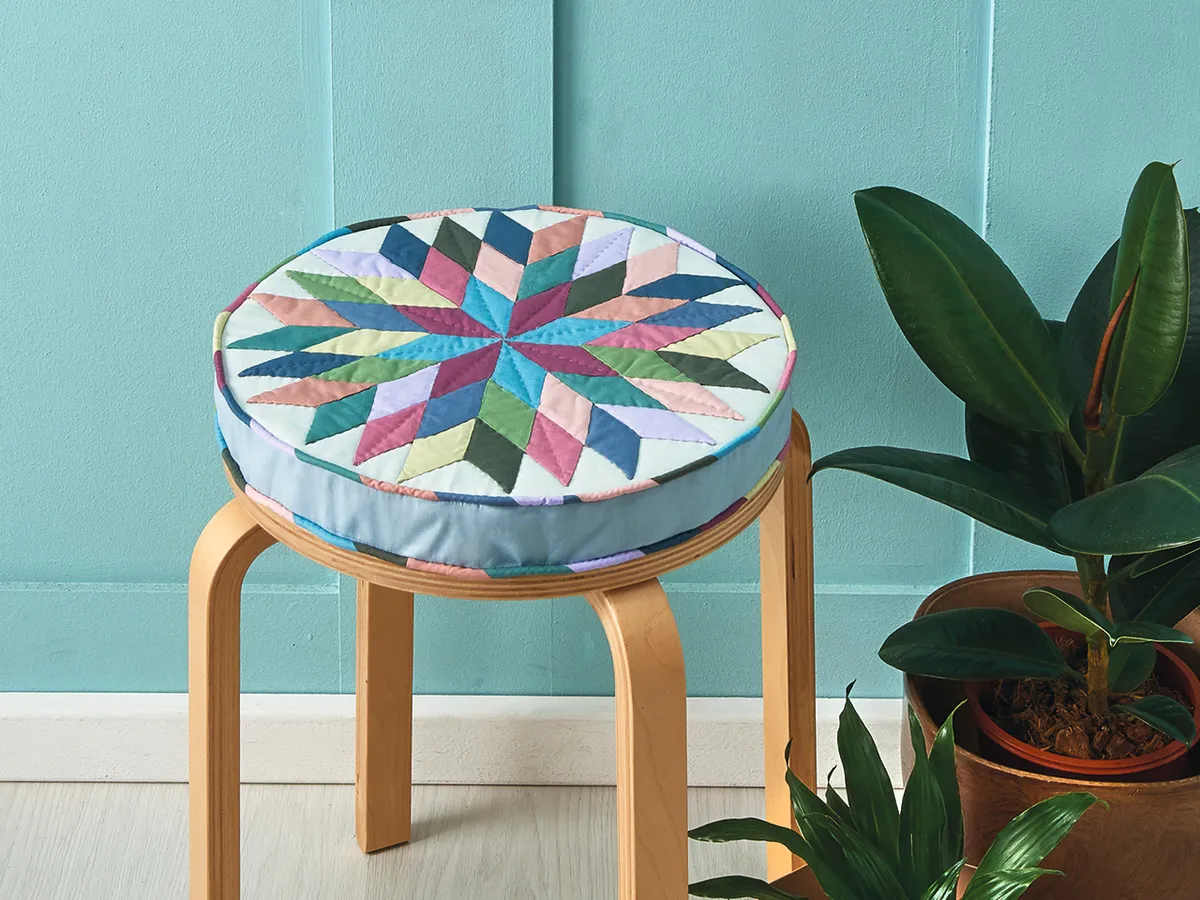
English paper piecing and hand quilting are two of the most soothing slow stitching methods you could wish for. If you’d like to try your hand at a project that combines the two, look no further.
Curl up on the sofa and get settled in for a cosy evening creating your very own patchwork stool cover, with this pattern by Rebecca Reid!
2. How to make a patchwork tote bag
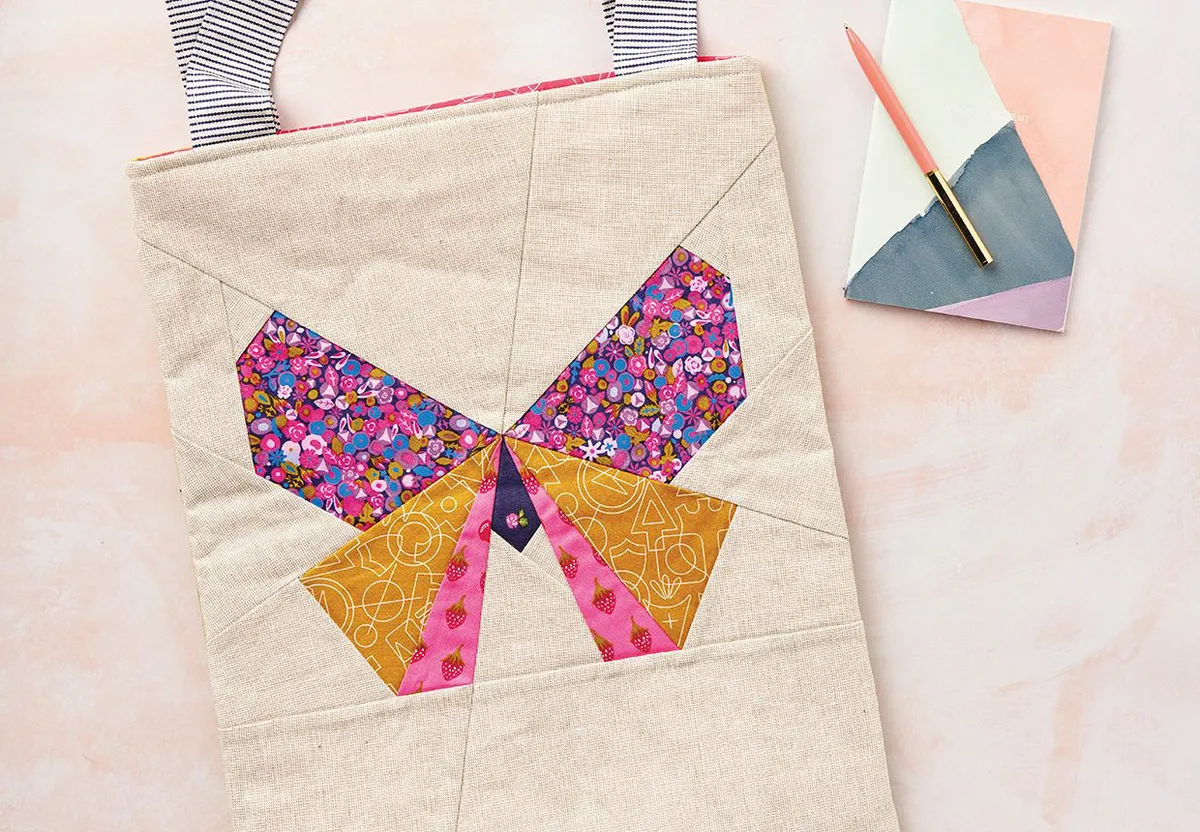
Don’t let this FPP butterfly pass you by!
Get to grips with the Foundation Paper Piecing technique with this pattern by Susi Bellingham. Create the perfect patchwork tote bag to ensure you’re the belle of the supermarket.
3. Patchwork zip case project
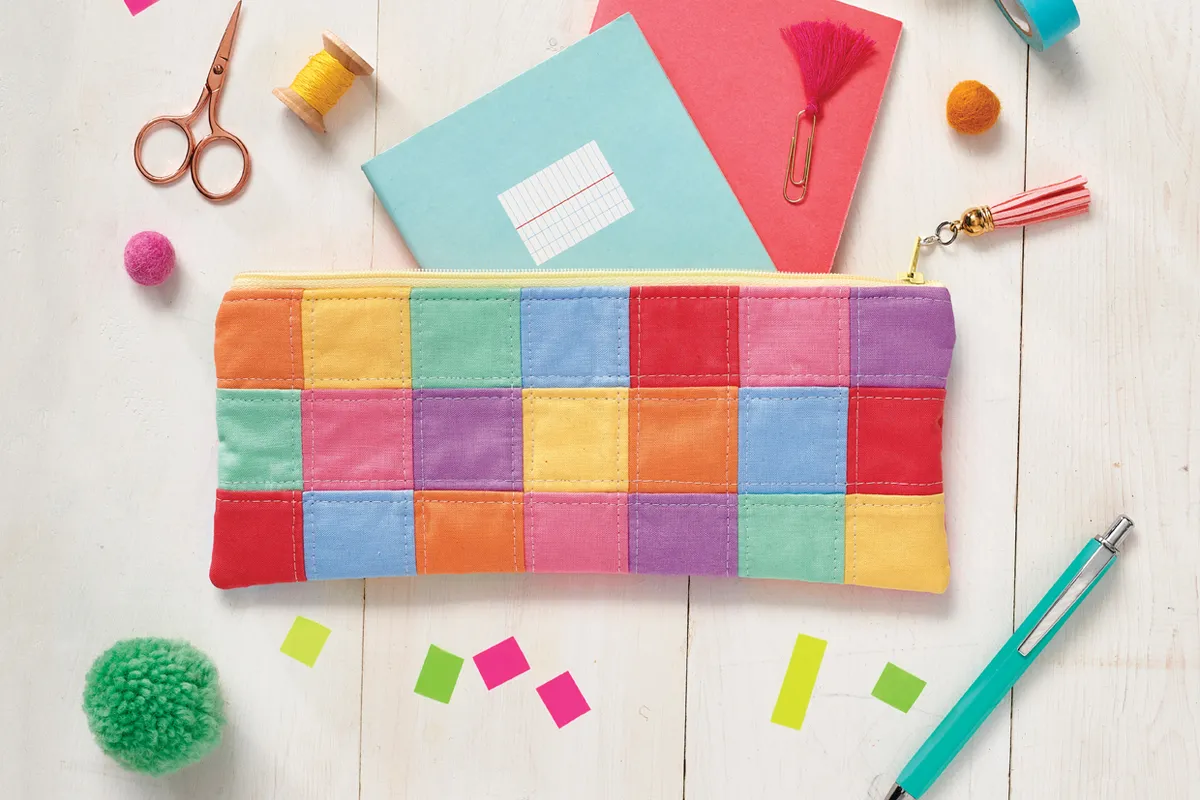
Elmer the Patchwork Elephant, is that you? No! It’s an adorable pencil case by Sarah Ashford, made from super speedy and oh-so-simple patchwork squares in cute pastel solids. Learn how to make a patchwork zip case here on Gathered.
Looking for more quilting goodness?
Hexies are all the rage right now in the quilting community. Why not use your newfound patchwork prowess to whip up one of these 14 hexagon quilt patterns?
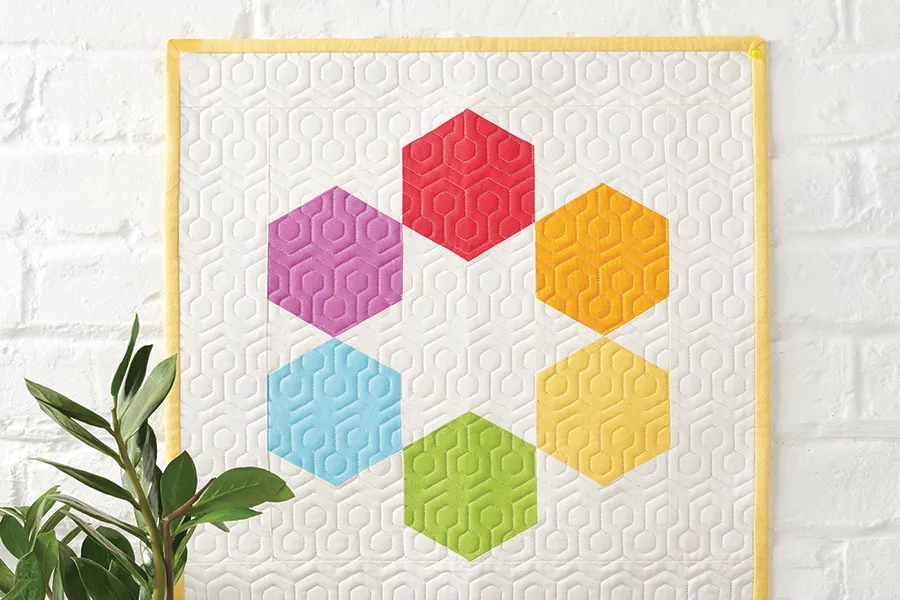
4. Patchwork pincushion pattern
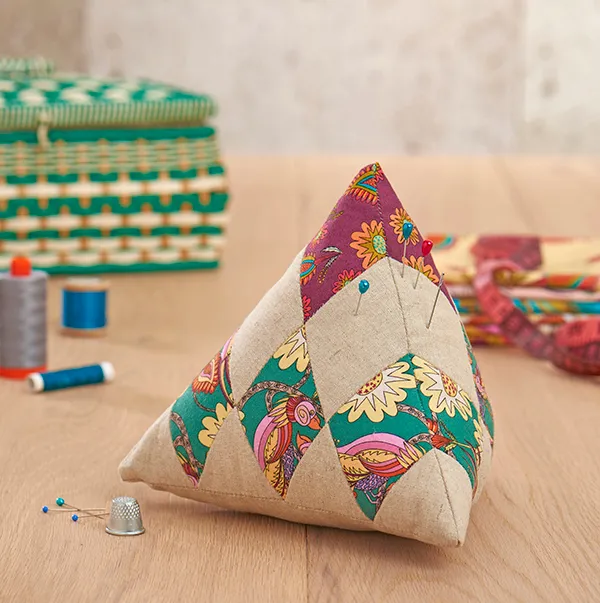
Struggling to find a place to store all your precious pins for sewing and quilting? Rather than buying a pincushion, you can make your own!
This pincushion pattern by Carolyn Forster uses English Paper piecing to create a unique-looking pyramid design.
5. Patchwork baby ball tutorial
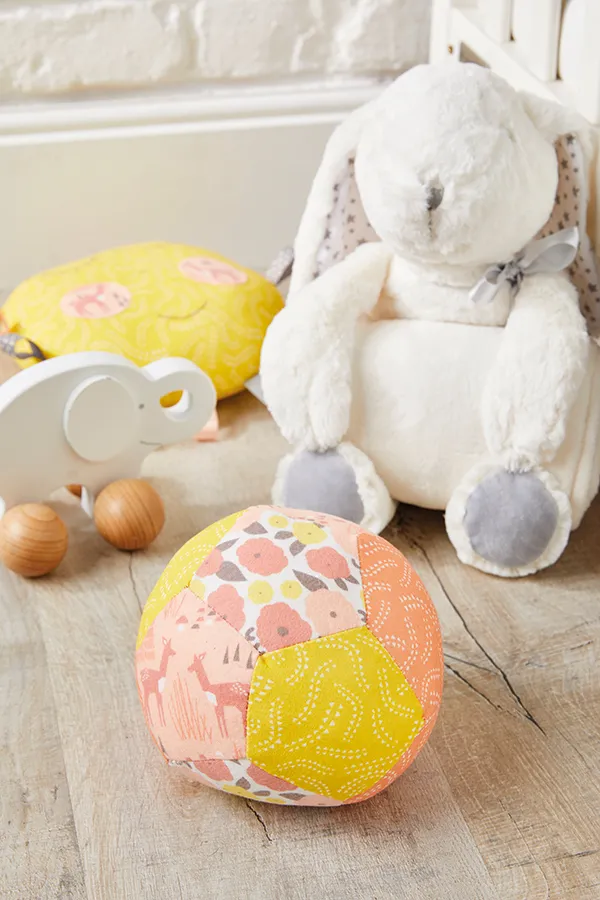
How cute is this gift idea for a newborn in your life?
Stitch this patchwork baby ball by Jessica Entwhistle using upcycled textiles from your stash or your wardrobe, such as super-soft flannel or knit fabrics.
Learn more about patchwork with our tips!
It’s time to take your quilting to the next level!
Level up your quilting with our 16 top quilting tips from the experts, to help give your patchwork that extra boost.
Start your patchwork quilting journey today
Beginners to patchwork: never fear! Once you start practising this technique, you’re sure to fall in love. Before you know it you’ll have tonnes of patchwork projects under your belt.
There are so many things you can make with patchwork – from quilts to homewares and even on-trend clothes and accessories!
Discover more quilting techniques with Gathered
If you’re after more quilting tips to up your patchwork game, check out our round-up of 20 beginner-friendly quilt kits!
To stay up-to-date on the world of modern quilting, and receive monthly magazines filled with beginner-friendly patchwork patterns and handy tutorials, don't forget to subscribe to Love Patchwork & Quilting!
